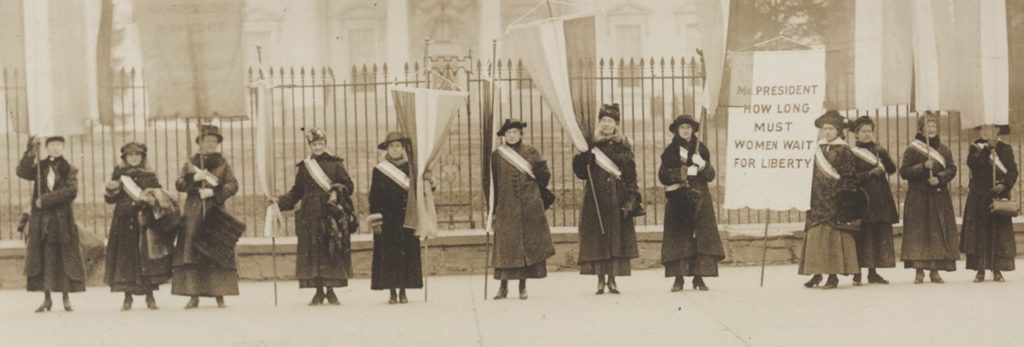An Unfinished Revolution: The Woman’s Suffrage Centennial

In the summer of 1848 as an historic number of women assembled in Seneca Falls, New York, Elizabeth Cady Stanton set out in legal terms the grievances of women with a male-dominated society. Her Declaration of Rights and Sentiments was an appeal for equal rights, including the right to vote.
On August 26, 1920—72 years after the Seneca Falls Convention—the 19th Amendment was officially adopted, prohibiting states and the federal government from denying U.S. citizens the right to vote on the basis of sex. An Unfinished Revolution: The Woman’s Suffrage Centennial marks the 100th anniversary of this crucial legislation, and examines the work that remains to ensure gender equality.
We hold these truths to be self-evident; that all men and women are created equal.
Elizabeth Cady Stanton, Declaration of Rights and Sentiments, 1848 Tweet
The town of Greenwich, home to many of the Progressive Era’s social elite, boasted several notable suffragists who became national and state leaders in the movement to pass the 19th Amendment, and efforts since 1923 to pass the Equal Rights Amendment. Told through stories of several of these notable figures, this dynamic and timely exhibition features original objects from the Greenwich Historical Society collections, as well as photographs, manuscripts, protest banners, items of clothing, and other material from museums, libraries, and private collections.
An Unfinished Revolution: The Woman’s Suffrage Centennial is guest curated by Kathleen Craughwell-Varda. It is presented with generous support from Northern Trust, the Pepsico Foundation and supported in part by a grant from Connecticut Humanities.
DIGITAL EXHIBIT
An Unfinished Revolution: The Women’s Suffrage Centennial
Explore letters, photographs, and historical material from the exhibition, and watch in-depth curator videos in this digital exhibition resource.
